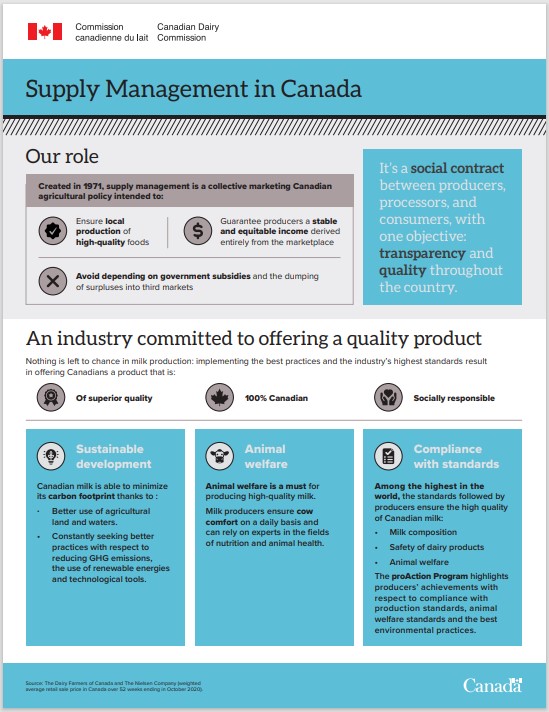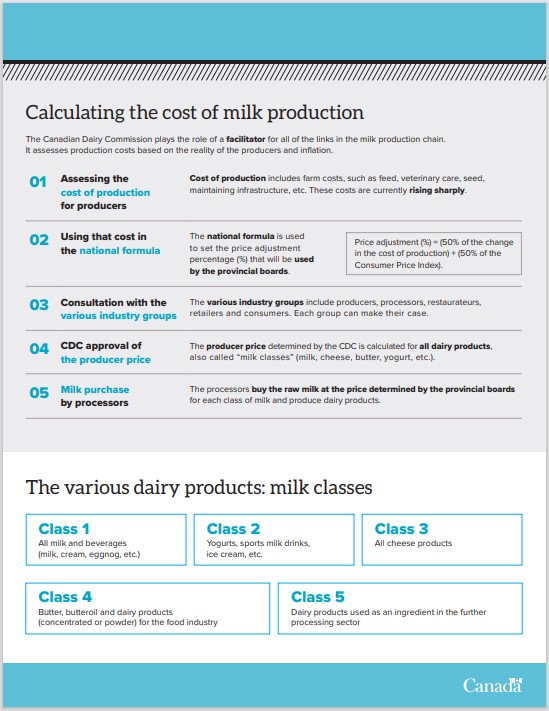Our role
Created in 1971, supply management is a collective marketing Canadian agricultural policy intended to:
- Ensure local production of high quality foods
- Guarantee producers a stable and equitable income derived entirely from the marketplace
- Avoid depending on government subsidies and the dumping of surpluses into third markets
It’s a social contract between producers, processors, and consumers, with one objective: transparency and quality throughout the country.
An industry committed to offering a quality product
Nothing is left to chance in milk production: implementing the best practices and the industry’s highest standards result in offering Canadians a product that is:
| Of superior quality | 100% Canadian | Socially responsible |
Sustainable development
Canadian milk is able to minimize its carbon footprint thanks to:
- Better use of agricultural waters.
- Constantly seeking better practices with respect to reducing GHG emissions, the use of renewable energies and technological tools.
Animal welfare
Animal welfare is a must for producing high-quality milk.
Milk producers ensure cow comfort on a daily basis and can rely on experts in the fields of nutrition and animal health.
Compliance with standards
Among the highest in the world, the standards followed by producers ensure the high quality of Canadian milk:
- Milk composition
- Safety of dairy products
- Animal welfare
The proAction Program highlights producers’ achievements with respect to compliance with production standards, animal welfare standards and the best environmental practices.
Calculating the cost of milk production
The Canadian Dairy Commission plays the role of facilitator for all the links in the milk production chain. It assesses production costs based on the reality of the producers and inflation.
| Assessing the cost of production for producers | Cost of production includes farm costs, such as feed, veterinary care, seed, maintaining infrastructure, etc. These costs are currently rising sharply. |
| Using that cost in the national formula | The national formula is used to set the price adjustment percentage (%) that will be used by the provincial boards.
|
| Consultation with the various industry groups | The various industry groups include producers, processors, restauranteurs, retailers and consumers. Each group can make their case. |
| CDC approval of the producer price | The producer price determined by the CDC is calculated for all dairy products, also called "milk classes" (milk, cheese, butter, yogurt etc.) |
| Milk purchase by processors | The processors buy the raw milk at the price determined by the provincial boards for each class of milk and produce dairy products. |
The various dairy products: milk classes
Class 1: All milk and beverages (milk, cream, eggnog, etc.)
Class 2: Yogurts, sports milk drinks, ice cream etc.
Class 3: All cheese products
Class 4: Butter, butteroil and dairy products (concentrated or powder) for the food industry
Class 5: Dairy products used as an ingredient in the further processing sector
Download the Supply Management fact sheet
 |
 |